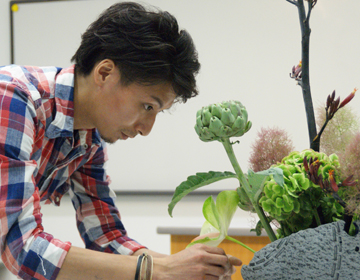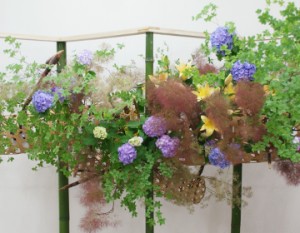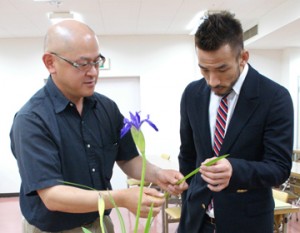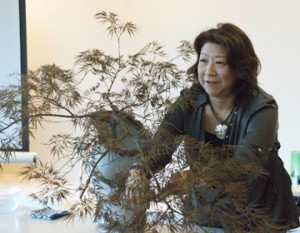Succeeding the “Iemoto” at age 6
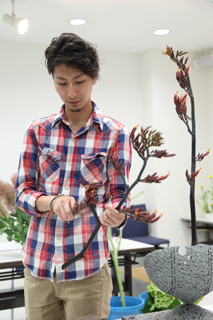
Ohara-ryu is a Japanese flower arrangement school that has been around since the 19th Century. We interviewed the 5th ”Iemoto” or head, Hirotaka Ohara, born in 1988, 10 years younger than Nakata. He succeeded the Iemoto at age 6 when his father passed away. He presented his works for exhibition for the first time when he was 10, and in March of 2012, his first solo exhibition took place at Takashimaya department store in Tokyo, where it attracted about 45,000 visitors over 6 days.
Some of his work expresses something unimaginable from the word ”ikebana”. Some are installations as big as several meters, and some use artificial material, perhaps expressing an evolution of the traditional world.
Ohara-ryu Undergoing Change

“The traditional style of Ohara-ryu was established by the first and second Iemoto,” the current Ohara Iemoto told us. One of the characteristics of Ohara-ryu ”ikebana” is “moribana”. Until then, ”ikebana” mostly had to do with linear lines, and thus ”moribana”, which uses a wide open vessel, arranging the flowers so that it can be enjoyed 3-dimensionally, was an Ohara-ryu invention. ”Moribana” made it possible to express the surface and the depth through ”ikebana”.
There were also transitions within the traditional methods. The 3rd Iemoto perfected an art form with surrealism, and the 4th Iemoto incorporated modernism, an artistic form that would match Western style space. The current Iemoto himself creates art that relates to modern art. Tradition is inherited, and is expanding its ways of expression.
Culture is Like Glue that Connects People
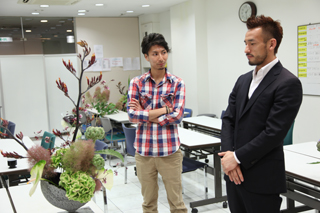
Ohara arranged flowers while we watched. He cut the branches off and started to create his work. The key is “to figure out what to delete to emphasize something else.” Nakata seemed intrigued by the Iemoto’s movements, and commented, “This is totally beyond my realm of imagination. My hands would just freeze, not knowing what to do.”
“”Ikebana” as I see it, is just sheer fun. Coming in touch with the flowers, and arranging them.” Ohara commented. “So it’s important to merge it with my lifestyle. In the past, ”ikebana” was associated with authentic Japanese such as ”kimono” and ”tatami” mats. These days it’s more often taught using tables. Of course we continue to teach the fundamentals, but the true essence has to do with freedom of expression.” As more students come to the schools, the ”ikebana” community expands. “I think culture is like glue that links people together.”
We have encountered people, flowers and tradition via ”ikebana”.
This is the culture and the charm of ”ikebana”.



